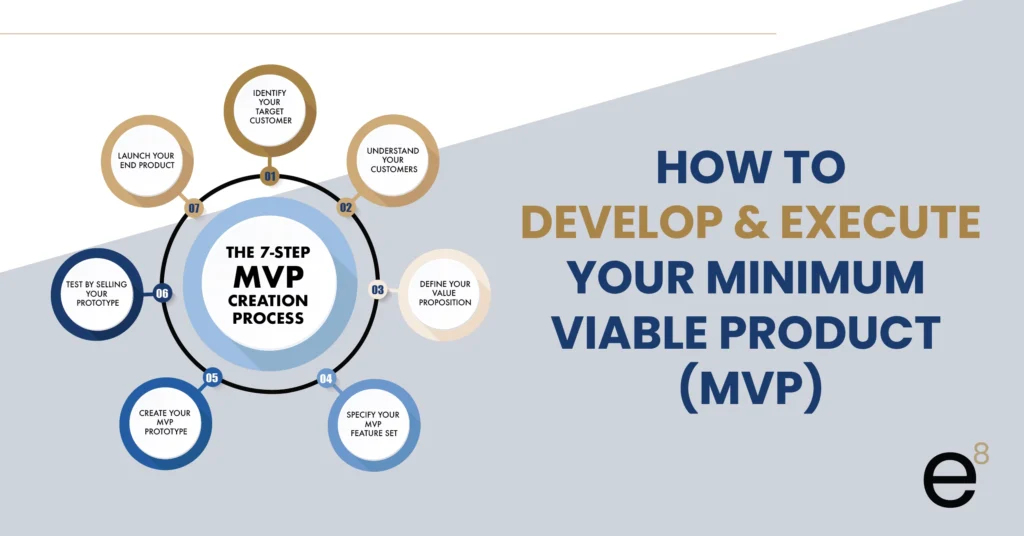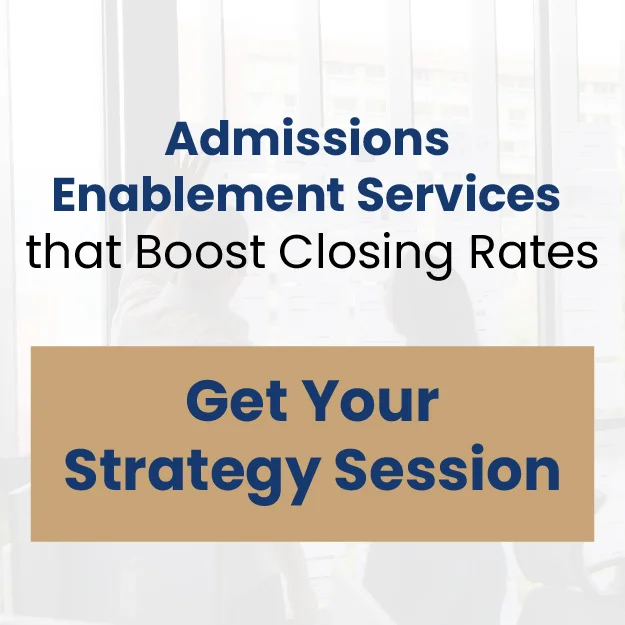One of my key mantras is “Always Begin with the End In Mind”.
And one of the best methods for doing so for most startups is with the well-established concept of Minimum Viable Product (MVP), articulated in Eric Ries’ well-known book The Lean Startup.
In this post I’ll highlight the main elements of the MVP approach, illustrate from my personal experience and summarize the main benefits.
The MVP Approach
Typically this is viewed as a 7-step process:
1. Identify Your Target Customer
For a consumer good, this involves every detail of your target customer’s life and creating an avatar (or persona, in marketing lingo). It summarizes where they live, their household income, recreational preferences, education, geographical location, age, etc.
2. Understand Your Customers
And more importantly, their needs, their pain and what they gain with your product. It’s important to include their emotional needs, not just their rational expectations. Remember that everything we do in life is typically to avoid pain or to gain pleasure. As a marketer, your goal is to leverage this.
3. Know Your Offer
In other words, define the value proposition. Find out what problem you are solving for your customers. Equally important is learning what underserved needs there may be within the existing solutions. It’s not enough to just have a slightly better price or new tweak to an existing solution for an otherwise happy customer.
4. Specify the Minimum Viable Product Feature Set
In other words, as the founder, what basic solution features you build as your prototype to test with real customers.
5. Create Your Minimum Viable Product Prototype
String together the solution and the most cost-effective way possible to go out and sell, knowing it’s not a complete solution.
6. Test By Selling the MVP Prototype to Prospective Customers
Equally important is getting their honest opinions and product feedback after they have paid for the value of your solution. Sometimes this is referred to as “shooting bullets”. This form of market research is essential.
7. Launch Your product. Fire cannonballs
Assuming your prototype worked and you had a reasonable success rate. Else review your MVP feature set (step 4). This is sometimes referred to as “shooting cannonballs”.
Know Your Prospective Customers
Never assume what you don’t know about your prospective customers
There are a variety of ways to get to know your prospective customers depending on your style, preference, resources and timeline. A couple of different methods have proven effective:
- Conduct surveys at scale using tools like Google Survey
- Interview employees at competing companies within your domain
- Talk with subject-matter experts in the industry you’re entering
- Explore online forums such as Quora, Meta (Facebook) and Linkedin groups
- My personal preference is to craft and personally validate a stellar offer
A Story From the MVP Trenches
In year six at my previous marketing agency, WSM, based in Nicaragua, we again struggled financially. Our direct sales growth model had stagnated, bleeding money with high overhead expenses, requiring continued growth and profitability. Once more, necessity forced me to walk through the 7-step process with a new market offer to save our nearly bankrupt company.
I recall it as clear as day. And luck was on my side. I was at a premier Google partnership conference in Mountain View, California with an exclusive group of preferred partners.
I showed up late to the meeting. I opened the door and interrupted the head of the Google channel sales programme who was speaking. He said to the crowd “Oh thank you for joining us Gary”. Then he expanded on that by saying “Well Gary is excused as he commuted a long way from Nicaragua to come join us today”.
My lateness turned out to be a blessing in disguise as the entire room turned around and saw me standing in the doorway—late!
During the next break several participants—all marketing agency owners—approached me, keen to ask whether we could create a partnership. Select partners were in a fortunate situation exceeding their sales projections, but stretched on fulfillment capacity.
Instead of hiring and training more full time staff, I proposed that they could engage with us in a white label model to immediately fulfil their clients’ needs and at an attractive markup, given our low cost structure in Nicaragua.
On my return to the office, I excitedly shared this great idea with my partners, executive team and board of directors. Fueled by espressos, we brainstormed an idea we’d flirted with for a long time.
As with any struggling sales organization looking to pivot, they asked a million questions about the concerns and obstacles we had to address financially. These included:
- How could I expect the company to pivot, put together an entirely new solution and go to market with rapidly diminishing cash reserves?
- How would we deal with the fact we didn’t have sufficient time to retrain our staff and acquire the needed tools and technologies?
- How about the fact that a channel sales model instead of our direct sales model would entail letting go of 50% of our existing highly loyal staff?
- Who was going to take the lead executing this great idea?
Plus, we had a very short time span before we would cease to exist.
So being the type of person who would rather ask for forgiveness than beg for permission, a few weeks later I walked into our fulfillment department with a signed contract from another agency for us to provide them with white label managed services for 20 of their clients. Hell yeah!
Now, in the secrecy of my corner office, I followed the 7-step process to specify, create and test our MVP with potential customers. And I negotiated a signed agreement for us to fulfil without having yet built the solution! Obviously this created a lot of tension internally. Several senior people left the company. Top performers were now challenged with this change in solution and process.
So, we pivoted our entire focus with a new strategy—becoming a reseller to other marketing agencies. Our plan was to sell PPC Management solutions in a white label format to resellers to offer their clientele under their brand and with a high markup.
None of this would have been possible to do without employing the MVP approach. And it turned out to be a highly successful, and profitable, pivot.
Benefits of the MVP Approach
By focusing on creating a bare-bones version of a product with essential features, the MVP approach allows businesses to swiftly validate ideas, minimize risk, and save valuable resources.
1. Rapid Idea Validation
One of the primary advantages of the MVP approach is its ability to quickly validate ideas. By developing a basic version of a product and releasing it to a target audience, businesses can gather real-world feedback and insights.
This invaluable data helps validate assumptions, identify potential market demand, and uncover crucial pain points early on. By obtaining user feedback in the early stages, businesses can refine their product strategy, saving time and resources that may have otherwise been invested in developing a full-scale product that doesn’t meet market needs.
2. Cost and Resource Efficiency
Creating a fully-fledged product requires significant investment in terms of time, money, and resources. The MVP approach, on the other hand, focuses on developing a minimal version of the product with only the core features necessary to address the main problem.
By eliminating unnecessary functionalities and complexities, businesses can reduce development costs and allocate resources more efficiently. Moreover, the early user feedback obtained from the MVP stage helps identify potential issues and prioritize product enhancements, leading to a more streamlined development process.
3. Agile Iteration and Continuous Improvement
The MVP approach promotes an iterative development process. By releasing an initial version and gathering user feedback, businesses gain insights into what works and what needs improvement. This feedback loop allows for continuous refinement and enhancement of the product based on real user experiences.
The agile nature of the MVP approach enables companies to adapt quickly to market needs, iterate rapidly, and stay ahead of the competition. This iterative approach also facilitates early market entry, allowing businesses to establish a presence while actively improving and expanding their product offering.
4. Reduced Risk and Increased Market Success
By employing the MVP approach, businesses can significantly reduce the risk associated with new product development. Validating ideas early on and incorporating user feedback minimizes the chances of investing in a product that fails to resonate with the target market.
The MVP acts as a proof of concept, providing evidence of the product’s viability and market demand. Armed with this validated data, businesses can make informed decisions about further investment, scaling, or pivoting their product strategy. By mitigating risk and ensuring market fit, the MVP approach increases the likelihood of achieving market success.
Just as I was able to with WSM, the MVP approach empowers businesses to create products that align with market needs, improving their chances of success and enabling them to deliver value to their customers effectively. As the entrepreneurial landscape continues to evolve, the MVP approach remains a crucial tool in the arsenal of innovative organizations.
Feel free to reach out to me if you’d like to discuss how this may be applied to your business.








